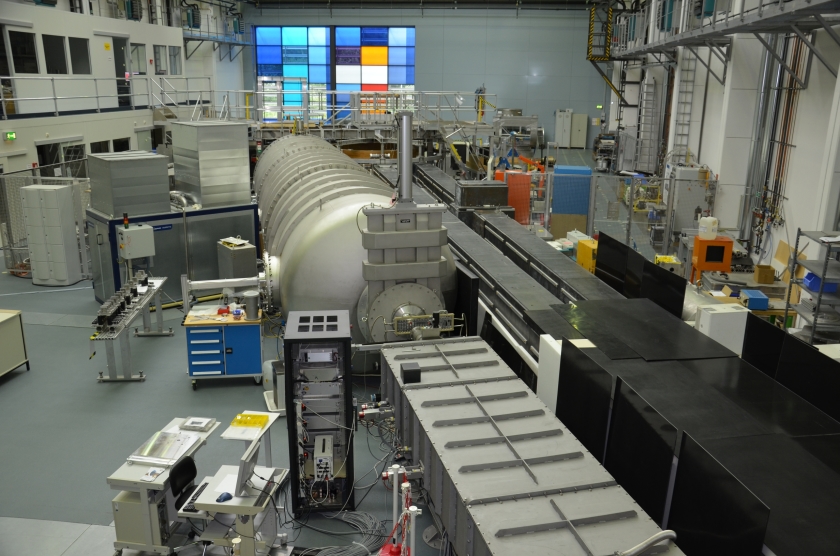Neutron instrument VSANS will move to Penn State University, USA

The VSANS instrument (here in the neutron hall at BER II) will move to Penn State University. © A. Kubatzki/HZB
At the end of 2019, the Berlin neutron source BER II was shut down as scheduled. To ensure that the high-quality instruments can continue to be used for research, they are moving to suitable neutron sources in Germany and abroad. Now, another move has been agreed upon: The Very Small Angle Scattering Instrument (VSANS) will find a new home at the Breazeale Research Reactor at Penn State University, USA, in spring 2022.
At Penn State University, the Radiation Science & Engineering Center (RSEC) operates the Breazeale reactor, which produces neutrons for research. An expansion is now planned there to accommodate the new, very large VSANS instrument.
VSANS stands for Very Small-Angle Neutron Scattering, i.e. the scattering of neutrons at very small scattering angles. This method enables insights into colloidal systems and soft matter, but also into glasses, biomimetic structural proteins, microemulsions, flexible electronics and many other questions, from physics to biology.
"Our goal is that our excellent instruments will continue to be available for research and innovation after BER II is shut down. We are therefore very pleased that the VSANS is being reinstalled at the Breazeale reactor", says Roland Steitz, HZB. This means that the HZB experts have now found a new location for almost all neutron instruments.
"The Breazeale reactor at the Penn State RSEC will be the only university research reactor with a SANS facility in the United States," says Kenan Ünlü, director of the RSEC and professor of nuclear engineering.
arö
https://www.helmholtz-berlin.de/pubbin/news_seite?nid=23155;sprache=en
- Copy link
-
Industrial Research Fellow at HZB: More time for discussions
The South African chemist Denzil Moodley is the first Industrial Research Fellow at HZB. He is playing a leading role in the CARE-O-SENE project. The Fellowship program aims to further accelerate the development of an efficient catalyst for a sustainable aviation fuel. An interview about the CARE-O-SENE project and why it is so important for scientists from industry and public research to work together.
-
Electrical energy storage: BAM, HZB, and HU Berlin plan joint Berlin Battery Lab
The Federal Institute for Materials Research and Testing (BAM), the Helmholtz-Zentrum Berlin (HZB), and Humboldt University of Berlin (HU Berlin) have signed a memorandum of understanding (MoU) to establish the Berlin Battery Lab. The lab will pool the expertise of the three institutions to advance the development of sustainable battery technologies. The joint research infrastructure will also be open to industry for pioneering projects in this field.
-
Battery research: visualisation of aging processes operando
Lithium button cells with electrodes made of nickel-manganese-cobalt oxides (NMC) are very powerful. Unfortunately, their capacity decreases over time. Now, for the first time, a team has used a non-destructive method to observe how the elemental composition of the individual layers in a button cell changes during charging cycles. The study, now published in the journal Small, involved teams from the Physikalisch-Technische Bundesanstalt (PTB), the University of Münster, researchers from the SyncLab research group at HZB and the BLiX laboratory at the Technical University of Berlin. Measurements were carried out in the BLiX laboratory and at the BESSY II synchrotron radiation source.
